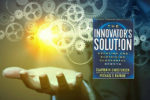Creating what customers want

To develop breakthrough products, product teams need to stop gathering requirements and listening to “the voice of the customer”. Product teams should focus on “jobs to be done” and the metrics by which customers evaluate products and services.
What Customers Want: Using Outcome-Driven Innovation to Create Breakthrough Products and Services by Anthony Ulwick
What Customers Want presents three product development tenets: customers buy products and services to help them get jobs done; customers use a set of metrics (performance measures) to judge how well a job is getting done and a product performs; customer metrics make possible the systematic and predictable creation of breakthrough products and services.
The foundation of the method presented in this book is a ranking calculation based on importance and satisfaction ratings from customer surveys. All downstream product development decisions are based on the list of prioritized jobs to be done, outcomes, and constraints. Author Anthony Ulwick approaches innovation from a process perspective–identifying inputs and outputs and mapping the steps in order to optimize.
For Ulwick , “innovation is simply the process of figuring out ‘what customers want.'” Specifically, “companies need to figure out what jobs customers want to get done and how they measure success in getting a job done before they can determine what solutions customers want.” This presupposes that customers know what jobs they want to get done and can articulate it, which may not be possible when creating entirely new offerings.
In terms of innovation success, Ulwick’s fundamental assumption is that “by identifying the stages of innovation and eliminating the factors that introduce variability into the innovation process, companies can realize higher innovation success rates and more breakthrough products and services.” The reduction of variability in innovation is a contested issue. Many innovation leaders assert that high variability is exactly what produces the best results–it is not possible to optimize the innovation process.
Moving beyond the customer-driven paradigm
The customer-driven model does not work because, Ulwick says, “when companies gather customer requirements they do not know what types of inputs they need to obtain from the customer. Neither does the customer. Consequently, the customer offers his requirements in a language that is convenient to him, but unfortunately that language is not particularly convenient for the creation of breakthrough products.”
The remedy is for companies “to know, well in advance, what criteria customers are going to use to judge a product’s value and dutifully design a product that ensures those criteria are met.” However, “customers have these metrics in their minds, but they seldom articulate them, and companies rarely understand them. We call these metrics the customers’ desired outcomes.” Identification of the outcomes through requirement gathering interviews and ranking them through surveys is Ulwick’s preferred method of prioritization.
Choosing your innovation strategy (types of innovation)
The first step in Ulwick’s method is to select the appropriate innovation strategy by choosing between various types of innovation: product/service innovation (improvements to existing offerings), new market innovation (where no product exists to do the job), operational innovation (increasing efficiency within business operations), and disruptive innovation (new technology which disrupts a dominant business model with a good enough solution). It’s also important to consider all relevant customers (including the end user) and decide where in the value chain you will focus your efforts. Once the broad innovation target has been established, customer inputs can then be gathered.
Capturing jobs, outcomes, and constraints
The objective of requirements gathering is for the product team to understand what metrics customers use to determine value when getting a job done (#jtbd on Twitter). While gathering requirements, teams typically face challenges with defining what requirements are, believing that they are getting the right kind of information from customers, and, in the process, not getting the right kind of information.
When asked, customers frequently offer solutions, design specifications, needs, or benefit statements. Because customers are not technologists or engineers, their solution recommendations often do not address the job to be done. Likewise, specifications from customers may not yield a better product. Needs are usually imprecise and open to interpretation, making them difficult for the company to incorporate into a product or service. Similarly, benefit statements are ambiguous and not actionable.
Given these challenges, the product team must focus on identifying the jobs customers are trying to get done (tasks and activities), outcomes the customers want to achieve (metrics used to define successful execution), and constraints that might prevent adoption. To discover these three inputs, Ulwick recommends user interviews with interviewer restatement and clarification. This method produces a concise requirements document which is then used as the basis of customer surveys for ranking purposes.
Identifying where the market is underserved and overserved
The core of Ulwick’s method is prioritizing the opportunities (jobs and outcomes that are underserved). Ulwick uses surveys and an algorithm to rank the opportunities that have been discovered. This ordered list of opportunities is then used to determine the order of investment for product and service development.
Specifically, a survey containing jobs, outcomes, and constraints gathered from customer interviews should be given to a statistically valid representation of the target market. In the survey, participants should be asked to rate the importance and their satisfaction with each element.
For Ulwick, Opportunity = Importance + max (Importance – Satisfaction, 0). For example, if a job had an importance of 10 and a satisfaction of 3, its Opportunity score would be 10 + max (10-3,0) = 17. The max function ensures that Opportunity is never a negative value (effectively prioritizing importance in the equation).
The Opportunity score is the core metric for determine which jobs, outcomes, and constraints to pursue. A score of 15 or above represents a highly attractive opportunity while a score of 10 to 15 are attractive for some markets, and scores of less than 10 represent overserved jobs and outcomes. This mapping can indicate overserved markets which might be candidates for a disruptive innovation.
Market segments (groups who have unique sets of underserved or overserved outcomes) are then defined by aggregated opportunity groups. To identify market segments, collect customers’ desired outcomes, choose the segmentation criteria (outcomes with the most variance), conduct cluster analysis to identify the groupings, and then profile the clusters. According to Ulwick, this process will identify unique opportunities in mature markets, customer segments willing to pay more for enhanced solutions, and undesirable customer segments. Growth targets can be identified through the same means–outcomes that are underserved. Focusing marketing message development and communication campaigns on outcomes and jobs to be done will ensure benefits are well understood by customers.
Although the products and services that satisfy a job to be done or outcome change over time, the outcomes customers are interested in do not. When an outcome is satisfied by a product or service, companies must look to other outcomes to create value or to unsatisfied/underserved outcomes. Assuming that outcomes and jobs to be done are available and correctly identified, a company can use this model to predict value migration from underserved to overserved outcomes.
You can’t put into Excel how customers will respond to a new idea — Jeff Bezos
The outcome-driven process moves away from ambiguous and non-actionable benefits statements, solutions, specifications and needs to higher order elements (jobs to be done, outcomes, constraints). It has a solid foundation in understanding the goals and objectives of your customers, but is heavily dependent on requirements sessions and surveys which may lead to blindspots that might be better discovered by other means. The risk in predominantly analytic method is that customers may change their minds about satisfaction and importance when presented with the final solution. Also, customers may know what jobs they are trying to get done today, but may not know the jobs they will try to get done tomorrow (new technology can present us with entirely new sets of jobs to be done and outcomes).
In the video below, Ulwick describes his epiphany having worked on the IBM PC jr product: “if we could address the criteria that people use when judging [a product’s] value, then we’d have winning products”.
In this excerpt, Ulwick begins his systematic approach to the innovation process by noting that there is typically not a shared definition of “innovation” or “customer needs” within companies (although both are perceived as critical for success).








Excellent post Olaf.